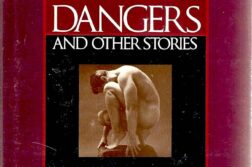WHEN Bob Fosse’s film version of Cabaret, starring Joel Grey as the Master of Ceremonies and Liza Minnelli as Sally Bowles, was released in 1972, it unleashed a new wave of bohemian chic unseen since the 1920’s. Sporting her emerald green fingernails, spidery eyelashes, and garish costumes, Sally’s cry of “Divine decadence, darling!” became the catchphrase for every sort of over-the-top behavior in the decade that eventually gave us disco, punk rock, cocaine, and Studio 54. But where did this demimonde of ambiguous morality and sexuality originate?
The literary genesis of Cabaret begins, of course, with Christopher Isherwood’s Goodbye to Berlin (1939) and The Berlin Stories (1945). The next step was the theatrical adaptation of these works as I Am a Camera, by John Van Druten, which opened on Broadway in 1951—sixty years ago this year—starring Julie Harris as Sally Bowles. The Tony-winning play’s success gave rise to a much less successful movie version in 1955. The idea for a musical rendition can be traced to Sandy Wilson of The Boy Friend fame, but it was Harold Prince who made it happen by hiring John Kander to compose the music and Fred Ebb to write the lyrics for what became the groundbreaking musical Cabaret, which opened on Broadway under Prince’s direction in 1966.






